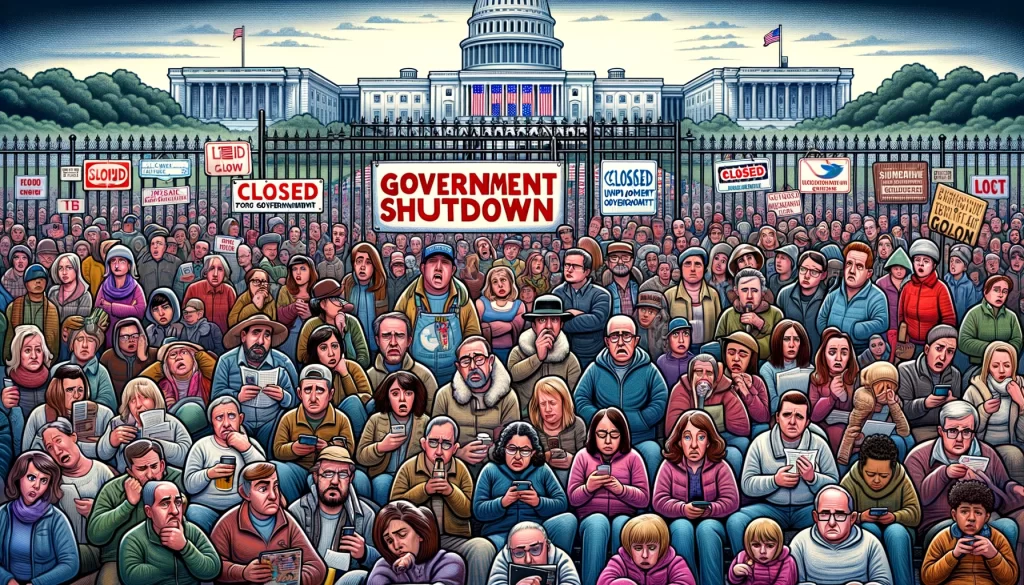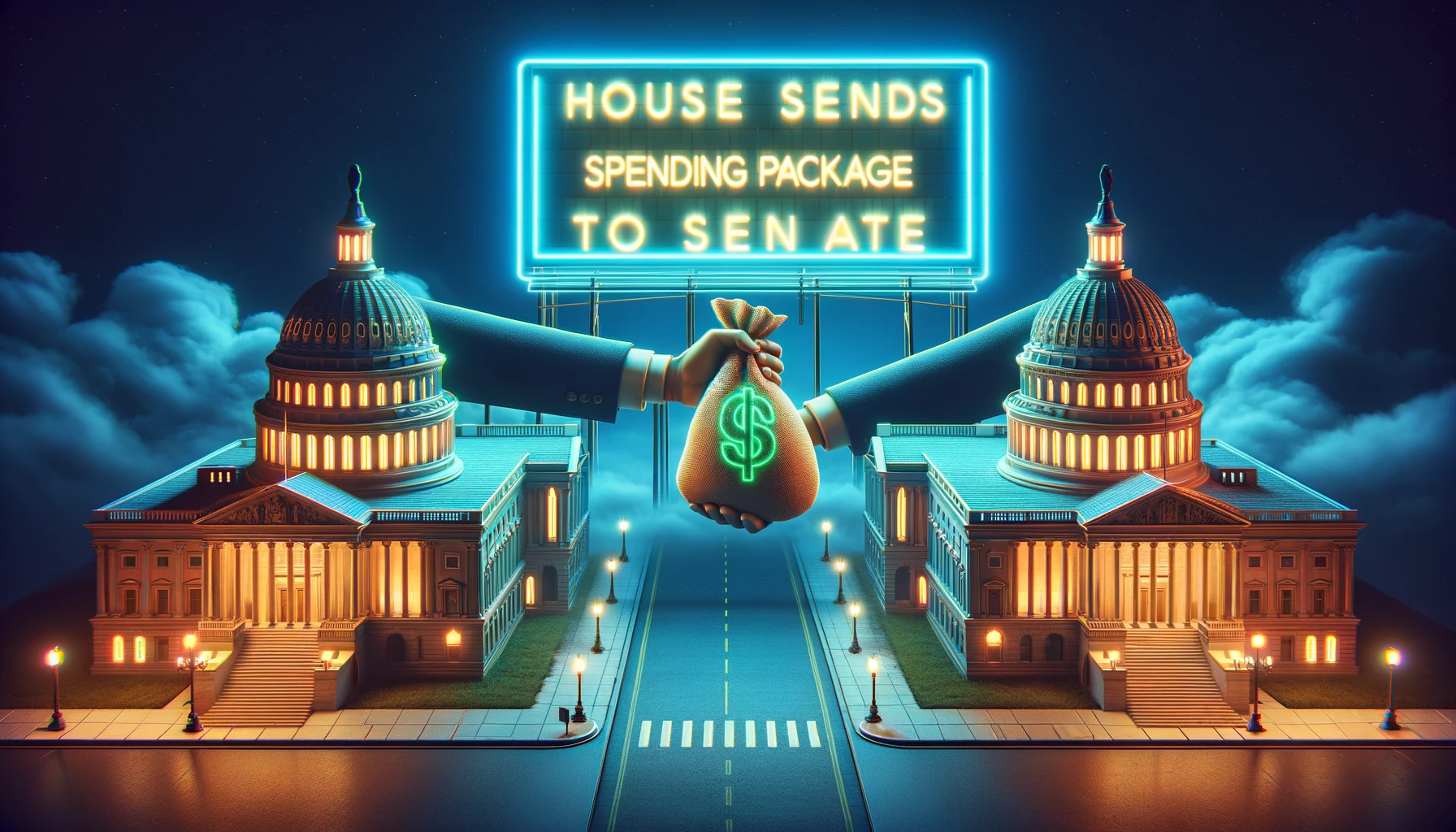On Friday the House of Representatives passed a massive $1.2 trillion spending package, narrowly avoiding a government shutdown. This critical decision means that the Senate is now on a tight deadline to approve the package.
The package, which won the House’s approval with a vote of 286 to 134, promises to fund approximately three-quarters of the federal government for the next six months. It includes some notable changes and additions: a raise in military pay, an end to U.S. funding for the United Nations relief agency for Palestinians, and enhanced security measures at the U.S.-Mexico border.
The bill’s passage in the Senate seems likely, with endorsements from President Biden, Senate Majority Leader Charles E. Schumer, and Minority Leader Mitch McConnell. However, the Senate could face delays due to procedural hurdles that any single senator can introduce.
A shutdown, if it had occurred, would initially have a limited impact since it would coincide with the weekend, when many federal workers would be off anyway. But if prolonged, the consequences could become severe, affecting more than half of IRS employees during the tax filing season, leaving Border Patrol officers and about 1.3 million active-duty military members working without pay, and similar issues could arise with TSA screeners, potentially causing travel delays.
This budgetary crunch comes with few alternatives for funding the government, making the passed package essential. According to Rep. Ken Calvert, not passing this package could result in a full continuing resolution, severely affecting national security and putting the country at risk.

As the Senate races against time, amendments proposed by Senators Rand Paul, Mike Lee, and Bill Hagerty could slow down the process. The urgency is heightened by the fact that both the House and Senate are scheduled for a 16-day recess starting after Friday.
House Speaker Mike Johnson faced challenges within his own party, particularly from the House Freedom Caucus, over federal spending amounts. The narrow passage of the bill in the House was a significant political maneuver, amidst internal conflicts and a motion by Rep. Marjorie Taylor Greene to oust Johnson from the speakership.
The package marks a major bipartisan effort under Johnson’s leadership, following the footsteps of his predecessor, Kevin McCarthy, who resigned over spending disagreements. By dividing the annual spending bills into two packages, Johnson aimed to gain leverage for funding cuts and conservative policies.
This strategy bore fruit in the negotiations, especially regarding the Department of Homeland Security’s funding, turning it into a broader debate on immigration policy. The bill promises increased funding for Immigration and Customs Enforcement and Border Patrol, cuts U.S. contributions to certain non-governmental organizations, and prohibits federal funding for the U.N. Relief and Works Agency for Palestine Refugees.
Furthermore, the bill includes cuts to foreign aid and implements a change to prevent non-official U.S. flags from flying on American embassies. Despite these conservative victories, Democrats managed to secure significant funding for their priorities, such as the early-education program Head Start and climate resilience funding at the Defense Department.
This article is based on the following article:
https://www.washingtonpost.com/business/2024/03/22/government-shutdown-house-senate-vote/

Background Information
Understanding these components helps clarify the complexities of federal budgeting and legislative processes, highlighting the negotiation, compromise, and strategic planning involved in governing.
1. Government Shutdown
- A government shutdown occurs when Congress fails to pass funding legislation to finance government operations and agencies. This can lead to the temporary closure of non-essential federal programs, and workers may be furloughed or work without pay.
2. Spending Package
- A spending package is a collection of legislative bills that, when passed, authorize the government’s expenditure for various operations, agencies, and programs. The $1.2 trillion package in question is designed to fund the government for a specified period.
3. Continuing Resolution
- A continuing resolution is a type of legislation that provides temporary funding to keep the government running when a formal appropriations bill has not been passed by the deadline. It helps avoid a government shutdown but does not provide new funding levels or policy changes.
4. U.S. Congress
- The United States Congress is the legislative branch of the federal government, divided into two chambers: the House of Representatives and the Senate. Both chambers must agree on legislation for it to become law.
5. Appropriations Bill
- An appropriations bill is a legislative act of Congress that provides funding for specific government agencies, departments, and programs. The bills specify how much money can be spent and on what.
6. Senate Majority and Minority Leaders
- The Senate Majority Leader is the head of the party with the most members in the Senate and sets the legislative agenda. The Minority Leader is the head of the party with the second-most members. Their support or opposition can significantly influence the passage of legislation.
7. Military Pay
- Military pay refers to the compensation received by members of the armed forces. The spending package includes provisions to raise this pay, recognizing the service and sacrifices of military personnel.
8. U.N. Relief and Works Agency for Palestine Refugees (UNRWA)
- UNRWA is a United Nations agency established to support the relief and human development of Palestinian refugees. The spending package proposes to eliminate U.S. funding for UNRWA, which is a significant policy change.
9. U.S.-Mexico Border Security
- Enhancing security at the U.S.-Mexico border involves measures and resources dedicated to preventing illegal immigration, trafficking, and other cross-border crimes. The spending package allocates funds for this purpose, reflecting ongoing debates over immigration policy.
10. Procedural Roadblocks
- In the Senate, individual senators can use various procedural tactics to delay legislation, such as filibustering or offering amendments. These can slow the passage of bills and complicate legislative schedules.
11. House Freedom Caucus
- The House Freedom Caucus is a group of conservative Republican members of the House of Representatives known for their strict fiscal and social conservatism. They can influence the legislative process and party positions on key issues.
12. Bipartisan Agreement
- Bipartisanship refers to the cooperation and agreement between two major political parties, in this case, the Democrats and Republicans. A bipartisan agreement on legislation implies compromise and mutual support from members of both parties.

Debate/Essay Questions
- Is it appropriate for a single senator to have the power to delay legislative processes through procedural roadblocks?
- Should the U.S. continue to fund international organizations like UNRWA, despite controversies?
- Does the practice of relying on stopgap measures and continuing resolutions to fund the government reflect a failure in the legislative process?
Please subscribe to Insight Fortnight, our biweekly newsletter!
